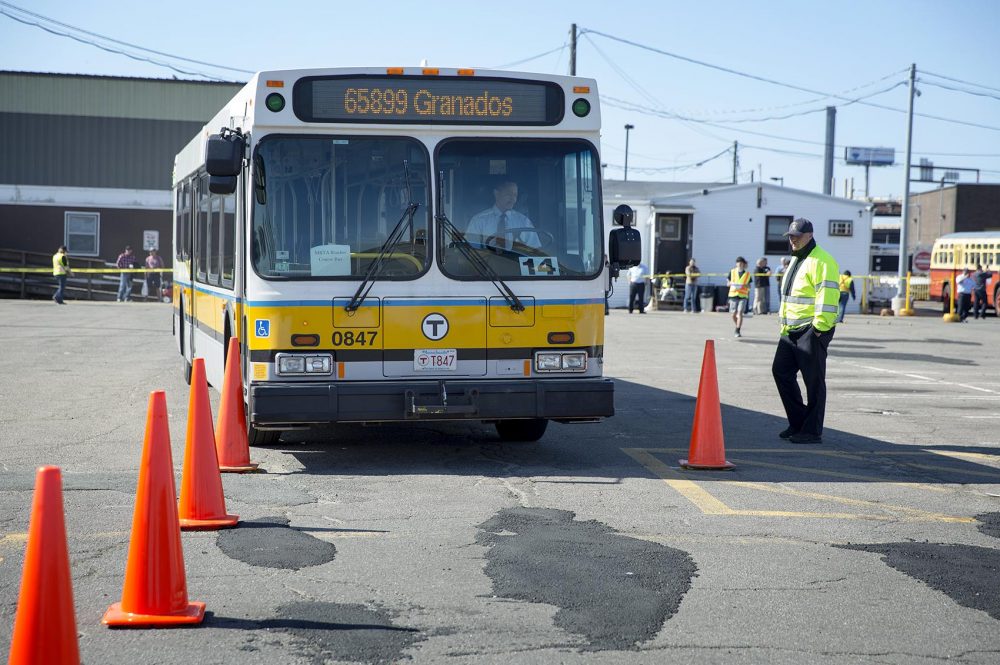You might have forgotten the 28 also has articulated buses.
Out of all the routes articulated buses operate on, most routes operate in areas that either previously did not see bus service, or were previously rail routes.
28 - (introduced in the
wake of the Orange Line Southwest Corridor rerouting, overlaps with other historical bus routes)
39 - (rail replacement bus service)
SL4 - (rail replacement bus service)
SL5 - (rail replacement bus service)
SL1 - (operates via Ted Williams Tunnel, this connection/bus route did not exist in 1972)
SL3 - (operates via Ted Williams Tunnel, this connection/bus route did not exist in 1972)
SL2 - (overlaps with other historical bus routes, and shorter than other Silver Line routes, but this route provides
far more service than demand warrants)
SLW - (Silver Line short turns, limited span of service, a very short route and relatively low frequency)
Of all of these, the 39, SL4, and SL5 are rail replacement bus services with rail service changes since 1972, and the SL1/SL3 could not have existed in 1972. This leaves the SL2, SLW, and 28, but of these, the SL2 and SLW are short routes, and the SLW is a limited span of service with lower frequency.
Therefore, the number of articulated buses should remove the number of buses needed to operate the 39, SL4, SL5, SL1, and the SL3 from the calculation of number of buses the MBTA has today, compared to 1972, to run buses on the same bus corridors and exclide those that didn't exist in 1972.
This leaves the 28, and the short SL2 route, and an even shorter SLW route, that has limited service, using articulated buses on routes that had historical bus service in 1972, in one form or another.
Here are some service changes since 1972 and their impact on the number of buses needed (looking at modern day bus routes). +/- is based on whether the number of buses needs to increase (+ more buses for longer bus routes to reach rail transit) or decrease (- less buses with new rapid transit extensions close by).
+/- Orange Line North 1975-1977 = Everett based routes extended 1 or 2 miles from Rt16/Rt99 Jct. to Sullivan or Wellington Station (8 today). Medford based bus routes shortened to Wellington (3 today), outer core suburban based bus routes shortened to Malden (4 today). Rt 101 bus 1.5 mile extension from East Medford to Malden Station (1). In aggregate totals, some bus routes needed extension to rapid transit (9 routes today), and some shortened (7 routes today).
- Red Line Quincy to Braintree 1980 = Dramatic shortening of much of the South Shore Quincy based bus routes. Frequent rapid transit several miles closer to Quincy/Braintree allows for higher capacity to meet potential higher demand for buses to Quincy Center/Braintree from outer suburbs, with a shorter bus route to rapid transit.
- Red Line Alewife 1985 = Limited shortening of only a few limited infrequent routes, 2 long outer suburban routes and 2 short inner core routes, 62/76, 67, 94, and the 350. The longer and more frequent 77/96 continue to run the full length from Porter to Harvard.
+ Orange Line South 1987 = Rail replacement buses needed along Washington Street, all Nubian bus routes extended an additional mile to Ruggles and Egleston bus routes extended .6 or 1.6 miles to Jackson or Ruggles. Given that several of these extended routes are very high frequency routes, alongside the Washington St. corridor, a lot more buses are now needed. Articulated buses used along SL Washington St. and the newly introduced Route 28 bus route.
+ Green Line Arborway (tempoary) cut 1989 = Rail replacement buses needed along Huntington Ave. in Jamacia Plain, would later use some articulated buses.
+ Ted Williams Tunnel/Silver Line Transitway 1995/2004 = New connections between South Station, Seaport, and East Boston/Chelsea, using much of the articulated buses on a new origin/destination pair that didn't exist in 1972 by bus.
=0 GLX 2022 = No bus routing changes were made, and won't be so until a phased BNRD is fully implemented sometime in 2028 or later. Therefore, the same number of buses are needed to run Somerville bus routes the full length to Lechmere, under almost full pre-GLX bus schedules, as of early 2023.
+? 6 car trains on Red/Blue Line 1988/1999/2011 = Higher subway capacity may have the potential to induce more rider demand for bus services to rapid transit.
+ Additional population and car traffic congestion 1972/2023 = More buses needed to run a longer, slower, car traffic clogged bus routes today than in 1972, at the same frequency. Note that oftentimes, suburban bus routes were eliminated and buses often redirected to run inner city routes that saw worsening traffic congestion over decades. A majority of bus lanes were built after COVID, and therefore, during the bus operator shortage.
- Elimination of suburban bus routes. 1972/2021 = Many routes were often reduced to 1 or 2 peak only trips before outright elimination, may also be due to budget cuts. In addition, an increase of WFH during the pandemic resulted in lower ridership along suburban or commuter/express buses, meaning some routes were suspended. An operator shortage in the wake of the pandemic has also resulted in some suburban routes being suspended. BNRD is slated to reduce the amount of express buses in the North Shore in upcoming years.

www.wbur.org
